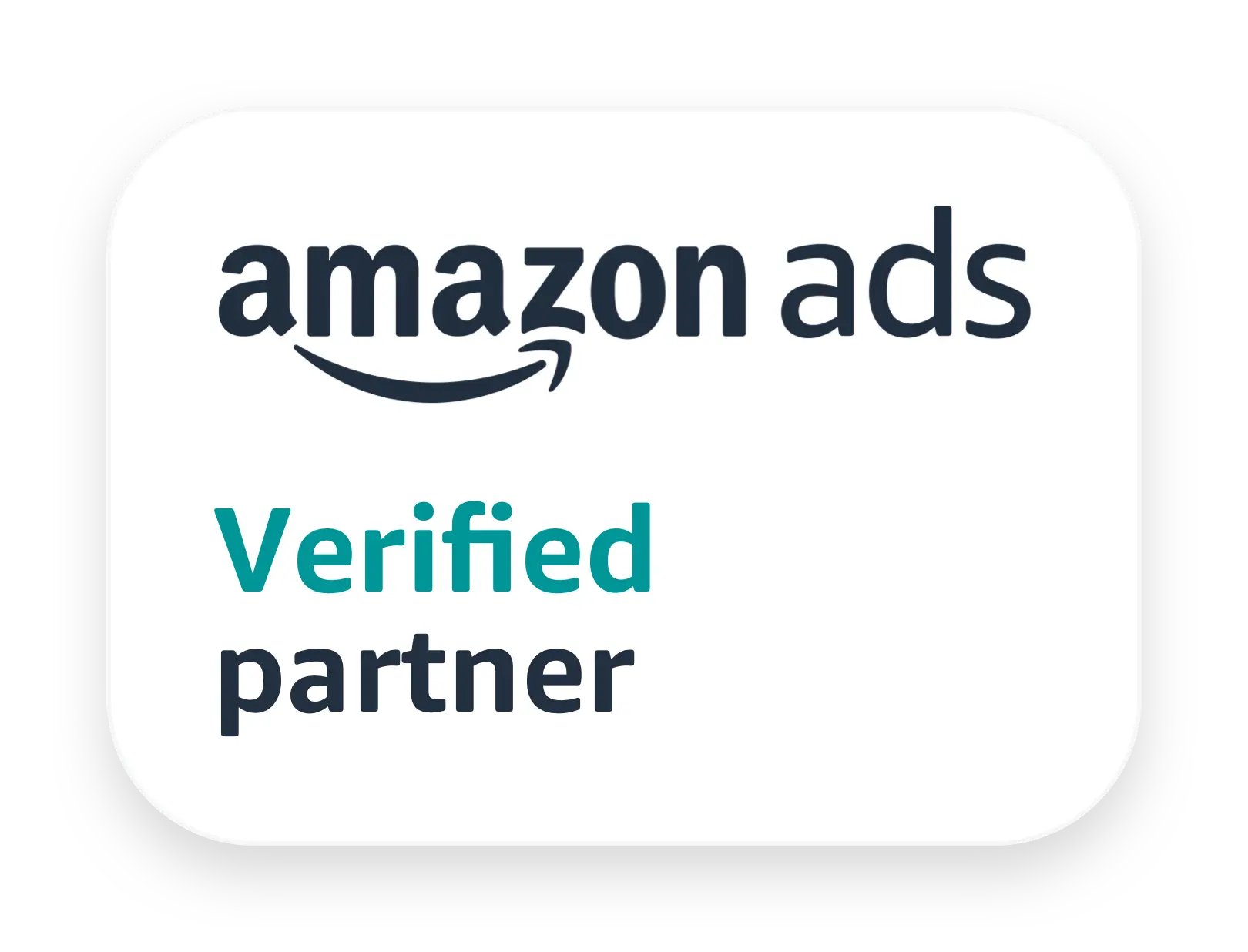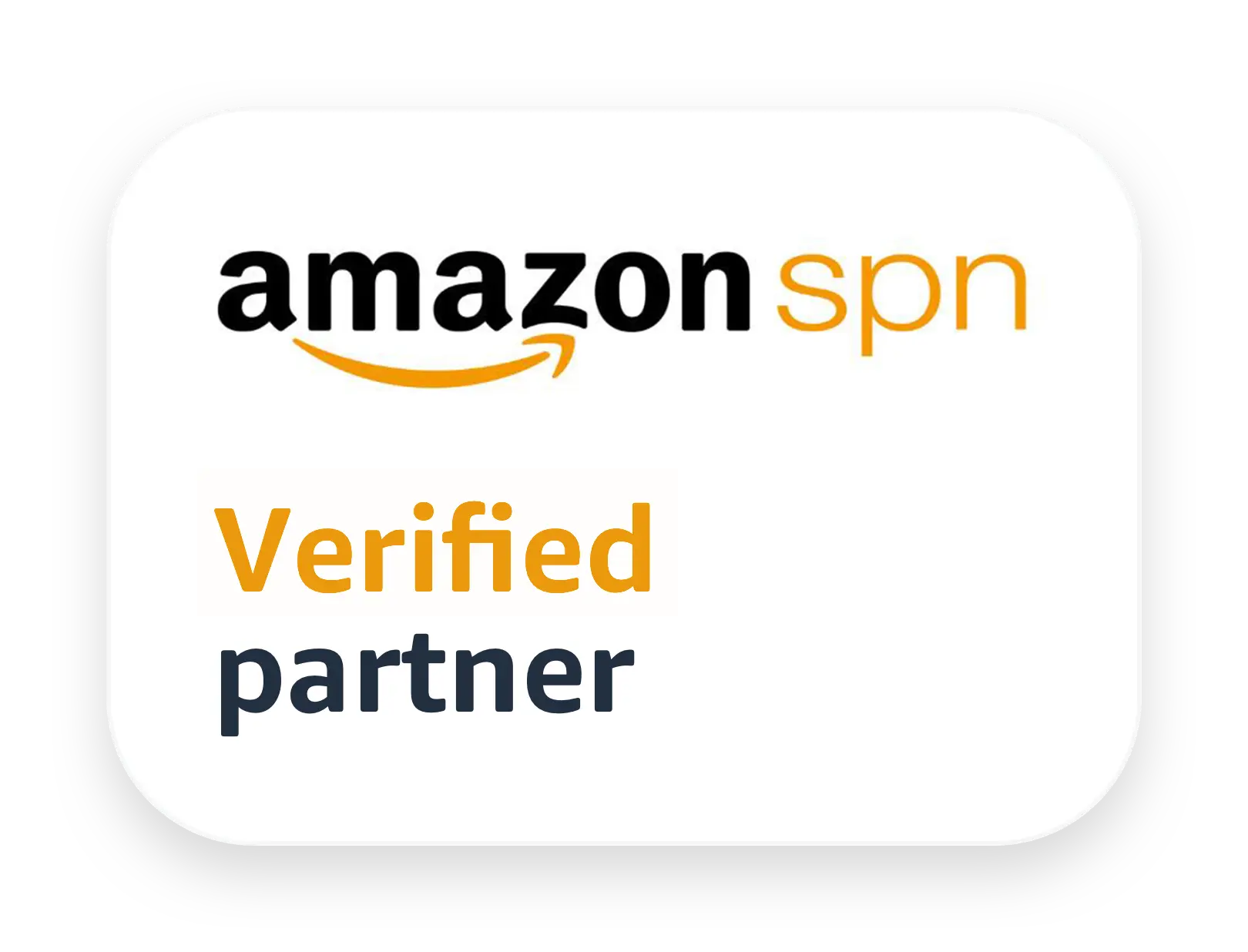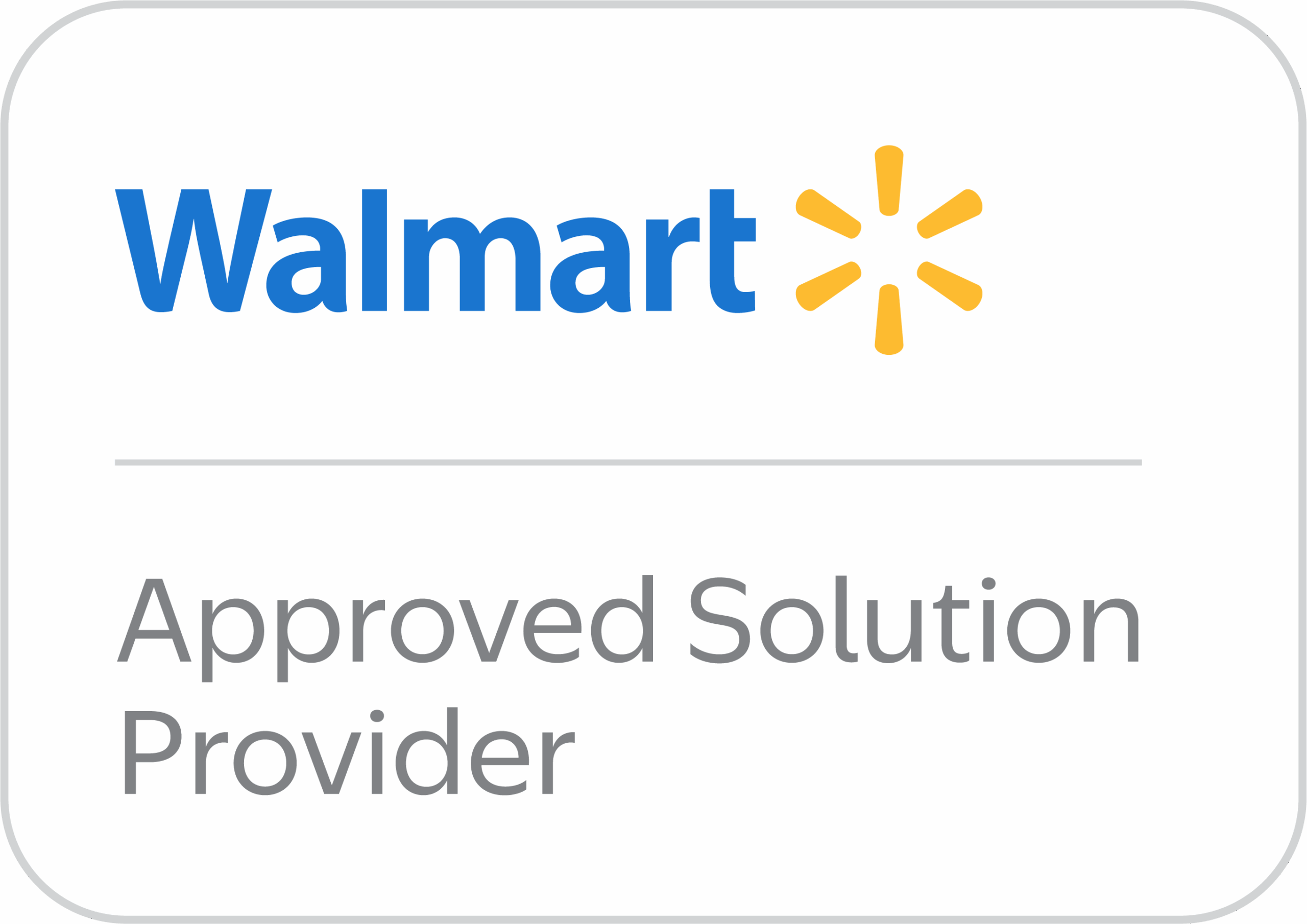Edit Content
Address
304 S. Jones Blvd #2661 Las Vegas, NV 89107
Stay Connected
304 S. Jones Blvd #2661 Las Vegas, NV 89107
Amazon PPC advertising is critical for any profitable product’s success. Getting it right means you’re dominating your niche, but poor execution can damage your brand’s future.
At ZonHack, we specialize in Amazon advertising management services, helping hundreds of brands across various marketplaces reduce Amazon advertising costs while maintaining excellent ACoS and TACoS.
Need help with Amazon ads management? Is Amazon PPC eating away your profits? Do you want to capture more market share with expertly planned Amazon PPC advertising management? Get in touch with us today and transform your campaigns!
Share your sales goals, and we’ll provide a roadmap, including forecasting ad spend, timelines, and strategies to achieve them.
We analyze titles, bullet points, images, enhanced A+ content, backend keywords, and attributes to ensure ad success.
We use Amazon-specific tools to find high-volume keywords, estimate bids, and plan short- and long-term targeting
We study competitors’ ad placements and strategies to identify opportunities to outperform them.
ZonHack uses advanced tools for campaign management, integrating them smoothly without disrupting your current systems
From repurposing existing content to crafting new visuals and videos, we ensure ads capture attention and drive conversions
We deploy ads across all types (sponsored product, brand, display) with a phased testing and optimization strategy.
We continually refine bids, budgets, placements, and keywords to ensure optimal performance
Our PPC efforts are designed to enhance your organic rankings, reducing dependency on paid ads over time
We focus on increasing your market share while keeping your campaigns profitable
We’ve proven time and again that ZonHack delivers. Our clients see remarkable improvements in their Amazon advertising performance, thanks to our comprehensive and data-driven approach.
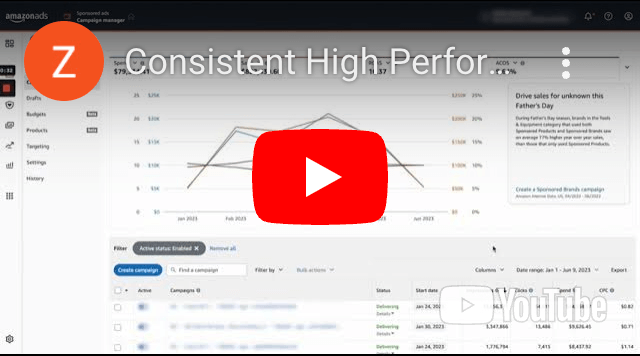
One client achieved an ACoS below 10% with a 9.0 ROAS across 4 brands
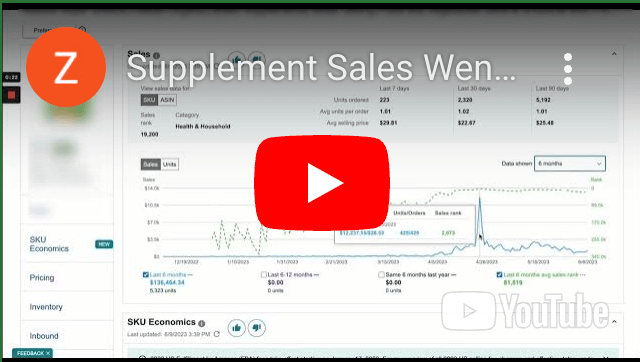
Increased sales from 5 to 489 units daily through our custom PPC strategies
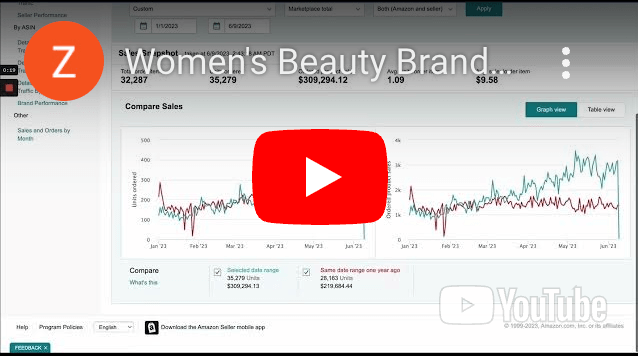
Doubled its revenue in just 3.5 months after adopting our PPC management plan
In 2017 a women's beauty product did $30k on their first year of business on Amazon with only 4 SKUs.
They then reached out to us with their plan of introducing 100+ SKUs in 2018. By the end of 2018, they were hitting around $100k per month.
We used both Amazon PPC and off Amazon advertising to generate sales and improve organic ranking. We were able to use the data from previous year to find out which keywords were working well for their product line and capitalized that information to our advantage.
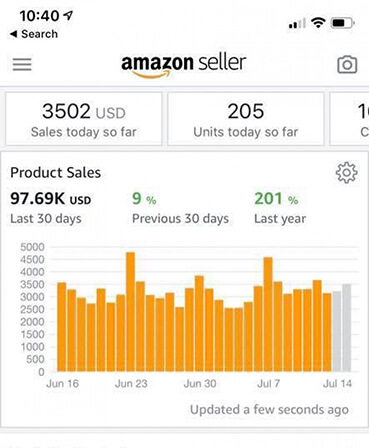
No, we do not sell any magic solution here that will miraculously grow your Amazon business. But if you are looking for a team that has been continuously getting good results for their clients, well, you are at the right place.
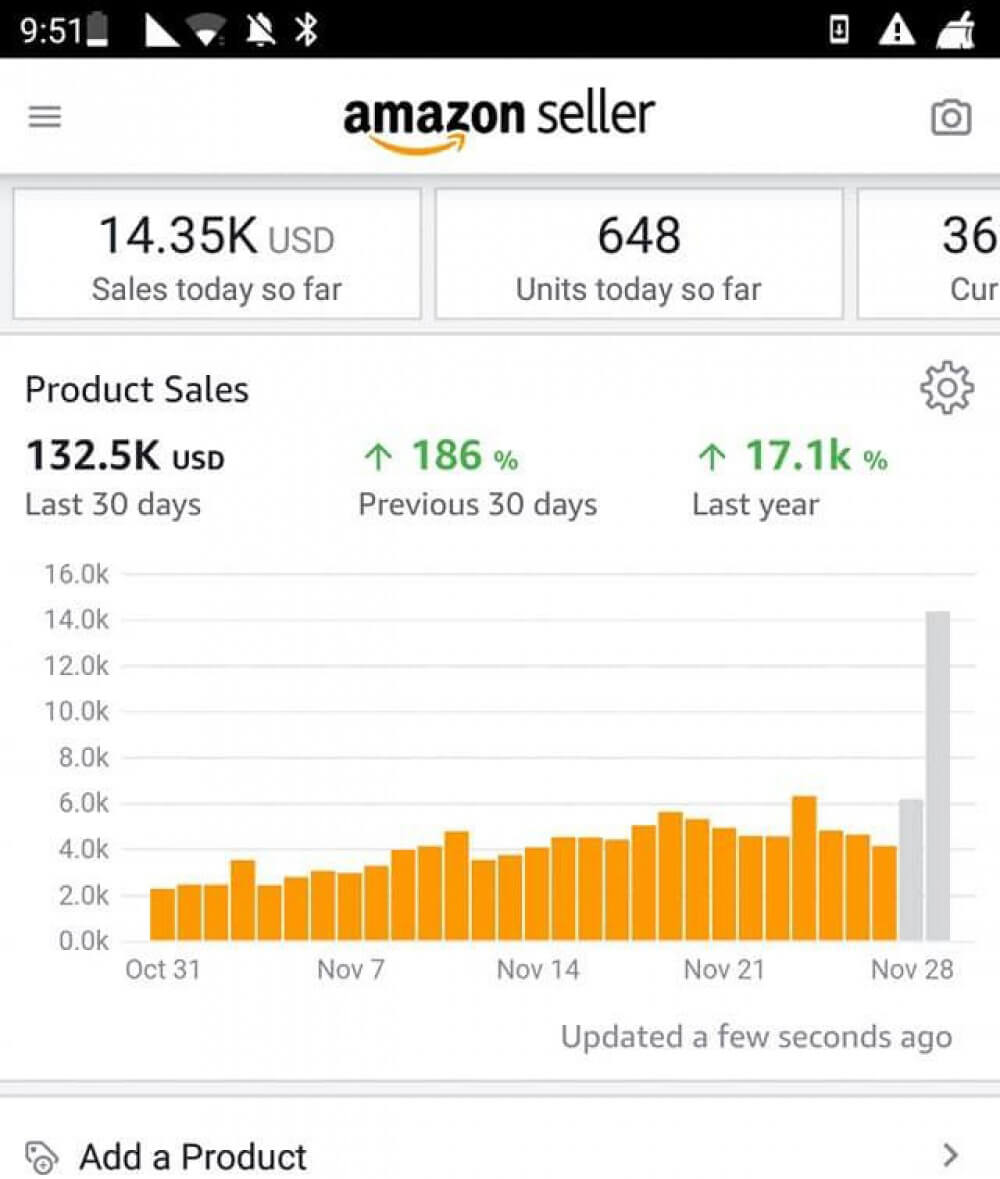
This health and supplement brand came to us with only one target and that is to gain the most out of Black Friday and Cyber Monday.
So we implemented a plan where we position the keywords ranking and signed up for few deals specific for BFCM. We tracked the products that did well during previous year's BFCM and piggybacked on tehir exposure.
We managed to increase the sales on Black Friday by 18x of the normal sales. A huge success!
Another BFCM success story. They sell men's fashion accessories. But their main challenge was inventory level management. Marketing and advertising were not a concern for them as the founders themselves were marketing experts.
They needed our help with supplier management and smooth operation of their logistics. When we took over the account there was no solid lead time that was agreed with the supplier and nobody knew how long it takes for the products to arrive from China USA.
We worked on their account for 2 months and resolved both supplier and logistics issues.
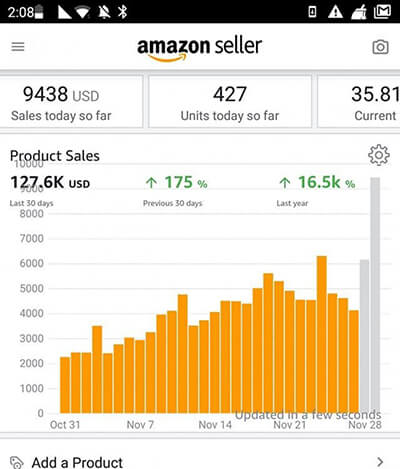
We’ve been managing this particular account for the past two years, and the sales have been growing really well. Looking at the data from the last two years, you can see that throughout 2024, we had steady growth. For example, comparing month to month, in November 2023, we did around $350,000, and by December, we reached $400,000. In 2024, we saw even better results, hitting over half a million in sales and close to $700,000 by December. January of this year was also much better than January 2024, and February is looking even stronger than the same month last year.
In short, not only has the account shown steady growth throughout my management, but we’ve also seen significant improvements compared to last year’s performance. That’s one account, and now I’ll show you the next one.
No, we do not sell any magic solution here that will miraculously grow your Amazon business. But if you are looking for a team that has been continuously getting good results for their clients, well, you are at the right place.
This particular client has been with us since January 2024, and when I pull up the data for the last year, you can see that we’ve been able to significantly raise their sales throughout the year. However, we did run into some major production issues around September and October last year, which caused us to run out of products. We were expecting to hit close to $600,000 or $700,000 in sales by January, but because of the inventory shortage, that didn’t happen.
That said, we still saw an increase in sales, and when compared to January of last year, we managed to do almost $150,000 more. As for February, we’ve already surpassed last year’s figures, and it’s looking like this month will finish much stronger as well. Once the inventory issues are resolved, I’m confident this account will do even better. Fingers crossed!
This product is very seasonal and mainly sells during the Q4 season, as it’s a gift item. It performs best around holidays, particularly in November and December. Looking at the data, you can see that in October 2024, there were zero sales. But when we launched the product in mid-November, within just two weeks, we managed to achieve $117,000 in sales. By the end of the year, in just one and a half months, we sold around $446,000 worth of the product, nearly 20,000 units, which was the entire inventory available at the time.
This rapid growth was driven by our advertising strategy, which worked really well for this particular brand. However, this kind of quick success isn’t typical for every brand. Most of the time, we prefer a more steady, gradual approach to sales growth, rather than the shock-and-awe method used here
This is another seasonal brand that performs well during the summer months. Looking at the monthly report for the past two years, you can see that in 2023, the highest sales occurred in May, June, July, August, and September—these months saw the majority of the sales. If we look at the 2024 data, the trend continues, with high sales in May, June, and July, compared to the other months.
What’s worth noting is the significant year-over-year growth between 2023 and 2024. In most months, sales are up by more than 30%. This growth has even continued during the off-season. I’m hopeful that this year, we’ll exceed the performance of 2024 and maintain at least 30% year-over-year growth during the peak season.
No, we do not sell any magic solution here that will miraculously grow your Amazon business. But if you are looking for a team that has been continuously getting good results for their clients, well, you are at the right place.
This dietary supplement supports weight loss and gut health. After launch, the client struggled to generate sales despite significant ad spend, selling only 2–3 units. They aimed to dominate their sub-niche on Amazon but lacked the expertise to do so.
When I took over, I revamped their listing—optimizing keywords, Title, Bullet Points, A+ Content, and Images—and helped gather more reviews. After relaunching with a full-funnel ad strategy, sales surged. Within two weeks, the product became the top seller in its subcategory. To prevent stockouts, we briefly slowed sales while awaiting the next shipment.
We have had the privilege of working with a long-term client managing four distinct brands under a single seller account. The following details highlight the outcomes of years of strategic effort in building a successful advertising and sales framework. In the early stages, we faced significant challenges, including ACoS (Advertising Cost of Sale) exceeding 150% and a ROAS (Return on Advertising Spend) below 1.0. However, the brand owner shared my vision, focusing on long-term growth rather than short-term gains.
Over the course of three years, we committed to continuous optimization and rigorous monitoring, utilizing a variety of tools and manual efforts. Today, we are proud to report consistent ACoS figures below 10% and a ROAS exceeding 9.0—outcomes that are highly sought after by experienced Amazon sellers.
No, we do not sell any magic solution here that will miraculously grow your Amazon business. But if you are looking for a team that has been continuously getting good results for their clients, well, you are at the right place.
We were approached by a women’s beauty care brand facing stagnant sales. Despite well-optimized listings, stunning images, and a balanced advertising strategy, their sales had plateaued for over eight months. The owner set an ambitious goal to double sales in six months.
After analyzing the products, we found that prior advertising efforts focused too much on specific KPIs rather than market share and growth. We discussed the challenges of achieving the sales increase and proceeded with advanced listing optimization, category research, and a strategy using Amazon PPC and TikTok ads.
In about 3.5 to 4 months, we successfully doubled their revenue, surpassing sales from the same period the previous year, all while keeping ACoS in check and maintaining inventory levels. The client now aims for a fivefold increase—an ambitious goal!
We were approached by a new household item brand aiming to establish a strong presence on Amazon. Despite being a recent entrant, the brand was determined to make an immediate impact. After launching, we focused on building a robust strategy that encompassed optimized listings, strategic Amazon PPC campaigns, and consistent inventory management.
In just three months, our efforts resulted in the brand achieving $100K in sales. This success was driven by a combination of competitive product positioning, targeted advertising, and an in-depth understanding of market demand. The brand is now positioned for continued growth and aims to further expand its footprint in the household category on Amazon.
Find out how we update our clients on a weekly basis on the changes that happened in the past few days. The report covers every aspect of selling on Amazon
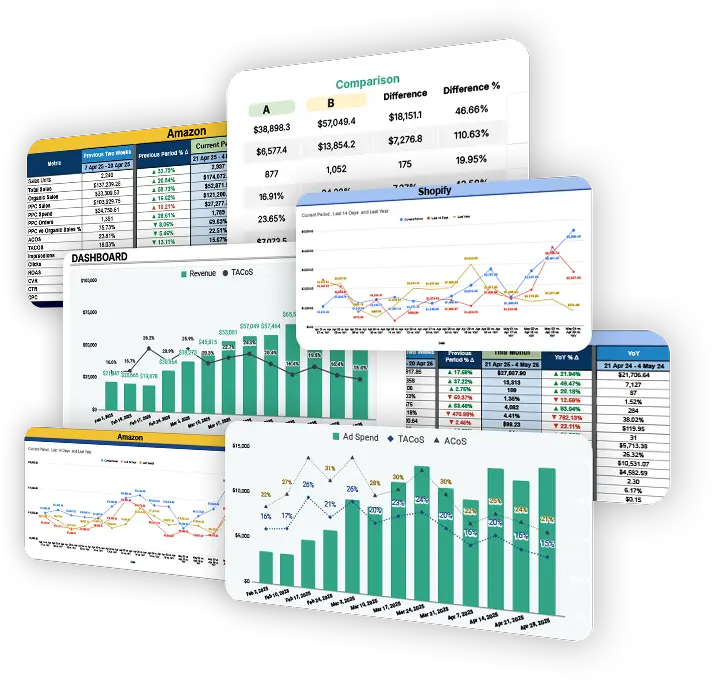
At Zonhack, we take a strategic, results-driven approach to maximize your Amazon sales through expert Amazon PPC management, sponsored ads optimization, and comprehensive advertising campaign management. Our proven process ensures your Amazon advertising campaigns are tailored to your business goals, delivering measurable ROI and sustainable growth. Here’s how we work to transform your Amazon seller central ads, FBA ads, and overall marketplace presence:
We begin by analyzing your Amazon advertising account, including PPC campaigns, sponsored products, and display ads, to identify opportunities for improvement. Our Amazon advertising specialists assess your current performance, keyword targeting, and ad spend efficiency. Using insights from this audit, we craft a customized Amazon PPC strategy that aligns with your goals, whether it’s increasing sales, improving ACoS, or enhancing brand visibility on the Amazon marketplace.
Our Amazon PPC experts conduct thorough keyword research to target high-intent, relevant search terms that drive conversions. We optimize your Amazon sponsored ads and product listing ads with precision, ensuring your campaigns are structured for maximum impact. From Amazon PPC campaign management to custom ad creation, we set up campaigns that leverage Amazon’s advertising platform to reach your ideal customers.
Optimization is at the heart of our Amazon advertising management services. We continuously monitor and refine your PPC ads, sponsored products, and display advertising to improve click-through rates and conversions. Our team uses advanced tools and data-driven techniques to adjust bids, refine keywords, and eliminate wasteful spend, ensuring your Amazon PPC advertising delivers optimal results.
Stand out on Amazon with compelling custom ads and optimized product listings. Our Amazon advertising consultants enhance your visuals and ad copy to boost engagement and conversions. Whether it’s Amazon sponsored ads, vendor ads, or personalized ads, we ensure your brand captures attention and drives sales.
As your dedicated Amazon PPC agency, we provide transparent reporting and actionable insights to keep you informed. Our Amazon campaign managers deliver regular updates on campaign performance, including PPC optimization metrics, ad spend efficiency, and sales growth. With our Amazon advertising support, you’ll have a partner committed to your long-term success.
Whether you’re a small Amazon FBA seller or a large vendor central brand, our Amazon advertising services are scalable to meet your needs. From PPC management for Amazon to sponsored ad management, we tailor our approach to your budget and goals, ensuring cost-effective results.
No, we do not sell any magic solution here that will miraculously grow your Amazon business. But if you are looking for a team that has been continuously getting good results for their clients, well, you are at the right place.
The Future is Here

Pioneer in AI-driven PPC optimization for rapid scaling

Advanced keyword research for listing optimization and organic ranking

Smart automation for cost-effective Amazon PPC management

Maximizing visibility while maintaining target ACoS/TACoS using AI
Amazon PPC Expert
ZonHack
Absolutely. We specialize in turning chaotic ad spend into efficient, high-ROI campaigns. Here’s how we do it:
Step 1: Audit
We analyze your:
Step 2: Optimize
Result: Controlled spending with improved sales velocity
Amazon offers three core ad types:
Sponsored Products: Promote individual listings in search results.
Sponsored Brands: Highlight your brand with logos, headlines, and multiple products.
Sponsored Display: Retarget shoppers on/off Amazon based on their behavior.
Bonus: We tailor campaigns to match your goals, whether it’s sales, visibility, or launching new products.
ACoS (Advertising Cost of Sale):
<15%: Ideal for low-margin products.
15–30%: Common for high-margin or growth-phase products.
TACoS (Total Advertising Cost of Sale):
<10%: Healthy for established products.
10–20%: Expected for new launches.
Our Strategy: We balance these metrics against your profit margins and business goals
Yes! Sales from PPC signal to Amazon that your product is popular, which can boost organic rankings. We focus on:
Targeting high-intent keywords.
Optimizing listings for post-click conversions.
Monitoring organic rank shifts post-campaign.
Start Smart:
Prioritize: Focus on bestsellers or high-margin products.
Use Automatic Campaigns: Let Amazon gather data cheaply.
Refine Gradually: Shift to manual campaigns, pruning wasteful keywords.
Zonhack’s Edge: We allocate budgets using AI to maximize clicks on your tightest spend
Yes! We integrate non-Amazon platforms to:
Retarget Amazon shoppers off-platform.
Build brand awareness pre-launch.
Drive external traffic to your listings.
Start Small, Scale Smart:
Testing Phase: 20–20–50/day to gather data.
Scaling Phase: Increase budgets for high-ROAS keywords.
We Guarantee: No wasted spend. Every dollar targets actionable metrics.
Yes. Here’s how:
Keyword Pruning: Eliminate low-performing terms.
Bid Adjustments: Use real-time data to lower bids.
Ad Schedule Optimization: Run ads only during peak hours.
Result: One client reduced ACoS by 40% in 30 days
Our 3-Step Strategy:
Dominate High-Value Keywords: Outbid competitors for critical search terms.
Leverage Sponsored Brands: Build authority with multi-product ads.
Optimize Conversions: Improve CTR and sales velocity to boost organic rank
It’s how you compete for ad placements:
Manual Bidding: Set max bids per keyword.
Dynamic Bidding: Let Amazon adjust bids based on conversion likelihood.
Our Approach: Hybrid bidding—aggressive on winners, conservative on tests
Where your ads appear:
Top of Search: Highest visibility, highest cost.
Product Pages: Target competitors’ customers.
Off-Amazon: Reach shoppers on Google/Facebook.
We A/B test placements to find your sweet spot
Yes, if done strategically:
Peak Hours: Raise bids for high-intent shoppers (e.g., evenings/weekends).
Off-Peak: Lower bids or pause ads.
We automate dayparting based on your sales data
